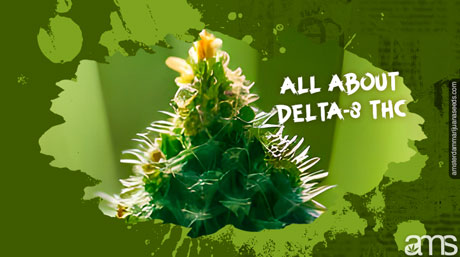Cannabinoids are the building blocks of cannabis strains. The effects of cannabis are derived from the combination of cannabinoids present in a given type of weed.
THC is the most well-known and widely used of these cannabinoids, but CBD or cannabidiol has seen surges in its recent usage rates. Both of these cannabinoids have cause-specific and different effects. But there are a variety of cannabinoids that researchers and growers can isolate for different purposes. One such cannabinoid that is now being leveraged is CBN or cannabinol.
There is a tiny amount of CBN present in any strain but it increases in amount as the THC molecules age; then they degenerate into CBN. When this transformation occurs, so do the effects of cannabis when used. Weed with a high CBN level has a much less euphoric effect and more of a sedative one. Cannabinol doesn’t get you stoned, but it will make you quite comfy and sleepy.
What are the benefits of CBN?
CBN is known for providing a good solution for sleep problems. People who cannot sleep well or who sleep very restlessly can benefit greatly from CBN.
Make your own CBN
Are you interested in experiencing the effects of cannabinol? There is an easy way to see if cannabinol can be of any benefit to your lifestyle. Just age some of your cannabis. The higher the THC content, the more significant the amount of CBN there will be in the plant after aging.
Letting some nugs sit for a few weeks will convert some of the cannabinoids. Once they’ve been left to air out store them back in a stash jar. When you try this aged bud for the first time, don’t be surprised when you don’t feel stoned. But you do feel comfortable and drowsy. Perhaps try using it before bedtime and see if soon you’ll be drifting off to dreamland.
Cannabinoids: A Closer Look at Their Roles
Cannabinoids are the building blocks of cannabis strains, responsible for the wide range of effects that different types of weed can produce. THC (tetrahydrocannabinol) is the most well-known cannabinoid, famous for its psychoactive properties that cause the sensation of being “high.” In contrast, CBD (cannabidiol) has gained popularity for its therapeutic benefits without inducing a high. However, the cannabis plant contains over 100 different cannabinoids, each with unique properties and potential uses.
The Rise of CBD
CBD has seen a surge in usage due to its non-psychoactive nature and numerous health benefits. It is used to alleviate conditions such as anxiety, chronic pain, epilepsy, and inflammation. Unlike THC, CBD does not bind strongly to CB1 receptors in the brain, which is why it doesn’t produce a high. Instead, it interacts with various receptors throughout the body, contributing to its therapeutic effects.
Understanding CBN (Cannabinol)
CBN is another cannabinoid that is gaining attention for its specific benefits. It is present in small amounts in fresh cannabis but increases as THC ages and oxidizes. This conversion process changes the effects of the cannabis. CBN is known for its sedative properties, making it an excellent option for those seeking relief from sleep disorders or insomnia. Unlike THC, CBN does not produce a euphoric high but can make users feel relaxed and sleepy.
How to Increase CBN in Cannabis
If you want to experience the effects of CBN, you can easily increase its concentration in your cannabis. By allowing your cannabis to age, you enable the THC to convert into CBN. This process can be done by leaving your cannabis nugs out in the air for a few weeks. After aging, store the cannabis in a stash jar and try it before bedtime. You may find that it helps you fall asleep more easily and improves the quality of your sleep.
Conclusion
Cannabinoids play a crucial role in the effects of cannabis, with each cannabinoid offering unique benefits. While THC and CBD are the most well-known, other cannabinoids like CBN are gaining recognition for their specific therapeutic properties. By understanding and utilizing these cannabinoids, you can tailor your cannabis experience to meet your individual needs, whether for relaxation, pain relief, or better sleep.
FAQs about What is Cannabinol and what are its effects?
What are the primary cannabinoids in cannabis, and what do they do?
The primary cannabinoids in cannabis are THC and CBD. THC is known for its psychoactive effects, providing a euphoric high, while CBD is non-psychoactive and offers therapeutic benefits such as pain relief, anxiety reduction, and anti-inflammatory properties. Both cannabinoids interact with the body's endocannabinoid system but in different ways, contributing to their distinct effects.
How does CBN differ from THC and CBD, and what are its benefits?
CBN (cannabinol) is a cannabinoid that forms as THC ages and oxidizes. Unlike THC, CBN does not produce a euphoric high but is known for its sedative properties. It is beneficial for people with sleep disorders, as it can promote relaxation and improve sleep quality. CBN is also being studied for its potential anti-inflammatory and pain-relieving effects.
Can I increase the CBN content in my cannabis, and how?
Yes, you can increase the CBN content in your cannabis by allowing it to age. When cannabis is exposed to air over time, the THC converts into CBN. To do this, leave your cannabis nugs out in the air for a few weeks, then store them in a stash jar. The aged cannabis will have higher CBN levels, which can provide a more sedative effect ideal for night time use.











